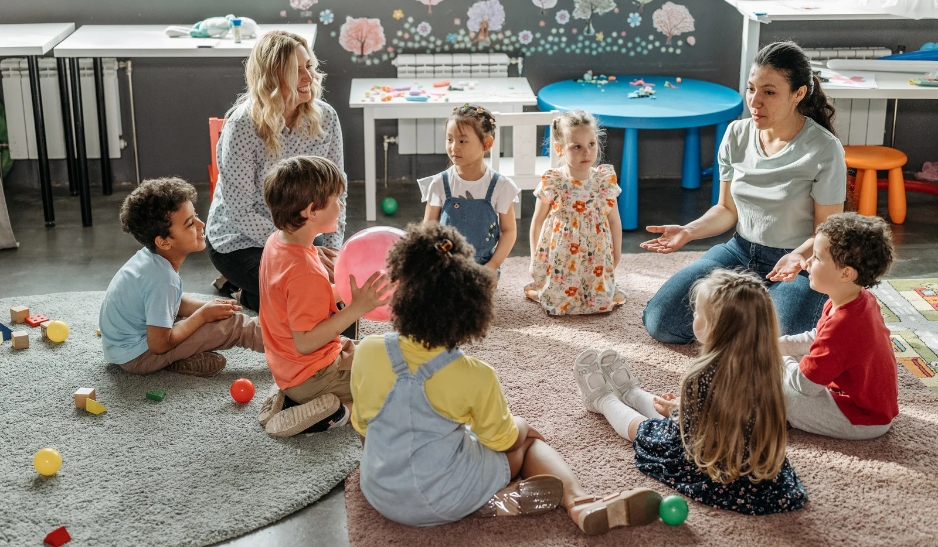10 Tips for Developing an Inclusive After School Curriculum

10 Tips for Developing an Inclusive After School Curriculum
Over the past few decades, the education landscape has seen a significant shift, with an increasing emphasis on comprehensive learning experiences. These are experiences that encompass not only in-classroom instruction but also out-of-school enrichment activities. After-school programs, once seen as merely add-ons, are now recognized as essential components of a child's academic and personal growth. They offer a unique space for students to explore new interests, reinforce classroom learning, and foster essential life skills.
Moreover, these programs are especially significant in the context of an ever-diverse student population. It is not just about providing extended care or offering academic help. It's also about acknowledging each child's unique background, capabilities, and aspirations. These after-school curriculums become platforms where children from diverse backgrounds come together, making it crucial to ensure these programs celebrate inclusivity and provide a nurturing environment for all.
Promoting Inclusive Practices in After-School Programs
Inclusivity in education is a universally acknowledged necessity. It ensures that every learner, regardless of their abilities, socioeconomic background, or cultural heritage, can participate fully and equally in the learning process. Inclusivity is not merely about assimilation or providing space; it's about engagement, empowerment, and equity. It's about recognizing and valuing the richness that diversity brings to the educational landscape.
After-school programs present a unique opportunity to foster inclusivity outside the traditional classroom setting. They can be thoughtfully designed to be engaging and beneficial for all students. An inclusive after-school curriculum enhances academic achievements, fosters social-emotional development, and promotes a sense of belonging among students. It helps in building supportive peer networks, developing empathy, and encouraging an appreciation for diversity. In essence, inclusivity in these programs goes a long way in molding our students to become compassionate and respectful members of society.
10 Tips for Developing an Inclusive After-School Curriculum
In the journey towards creating an inclusive after-school curriculum, several key factors come into play. These involve understanding and acknowledging diversity, incorporating different learning styles, fostering an inclusive environment, and promoting peer interaction. They also include integrating multicultural education, making accommodations for special needs, using inclusive language, and providing teacher training. Additionally, parent and community involvement, as well as regular review and improvement, play vital roles. Let's delve deeper into each of these areas.
1. Understand and Acknowledge Diversity
Recognizing diversity is fundamental to developing an inclusive curriculum. It's about understanding the myriad backgrounds, experiences, and abilities that students bring to the table. This acknowledgement extends to recognizing various learning styles and the necessity of special education accommodations for students who need them. Remember, diversity enriches the learning environment and provides a broader perspective to all students.
2. Incorporate Different Learning Styles
Inclusive education recognizes that students have different learning styles. Some children might be visual learners, others auditory or kinesthetic. Tailoring your after-school curriculum to incorporate these various learning styles ensures that every student has the opportunity to learn in the way that suits them best. From multimedia presentations to hands-on activities, variety is key.
3. Foster an Inclusive Environment
Inclusive environments are welcoming spaces where every child feels a sense of belonging. This involves more than just physical accessibility. It includes nurturing a culture of respect, open communication, and mutual understanding. This positive environment fosters student engagement and promotes better learning outcomes for all.
4. Encourage Peer Interaction and Collaboration
Encouraging peer interaction is a powerful way to promote inclusivity. Group activities help students learn to appreciate diverse perspectives, develop empathy, and work collaboratively. From group projects to team-building games, these opportunities for interaction encourage students to learn from one another and contribute to the learning community.
5. Integrate Culture and Identity
Multicultural education is a crucial element of an inclusive curriculum. Activities that expose students to different cultures, languages, and histories foster a sense of respect and appreciation for diversity. By integrating elements of multicultural education into your curriculum, you’re not just educating students about the world but also helping them become empathetic, global citizens.

6. Provide Accommodations for Special Needs
Special education is a fundamental aspect of inclusive education. Providing accommodations ensures that all students, including those with special needs, can fully participate and benefit from the curriculum. This may involve modifying teaching methods, adapting learning materials, or adjusting the physical environment. It's about removing barriers and empowering all students to reach their full potential.
7. Use Inclusive Language
Inclusive language is an essential tool in fostering an inclusive learning environment. It promotes respect and acknowledges diversity. Ensure all communication, whether verbal or written, is sensitive to differences in culture, gender, ability, and other factors. Inclusive language ensures that each student feels valued, respected, and part of the community.
8. Train and Educate Staff
Effective implementation of inclusive practices requires proper teacher training. Provide professional development opportunities for staff to understand the nuances of different learning styles, special education requirements, and multicultural education principles. Equipping educators with this knowledge enhances their ability to manage a diverse classroom and promote inclusivity effectively.
9. Involve Parents and Community
Parents and the community play a significant role in creating an inclusive curriculum. Their insights can help tailor the curriculum to the students' needs, preferences, and learning styles. Engaging community resources can also enrich the curriculum, making learning more relevant and exciting.
10. Regular Review and Improvement
Inclusivity is a continuous process. Regular review of the curriculum and seeking feedback from students, parents, and teachers is crucial. This iterative process allows for necessary adjustments to be made, ensuring the curriculum stays relevant and truly inclusive. After all, the goal is to provide a learning environment where every student can thrive.
These ten tips, while comprehensive, serve as a foundation for developing an inclusive after-school curriculum. It begins with acknowledging the rich diversity of students, adapting to their various learning styles, and fostering a safe and nurturing environment. The curriculum also embraces multicultural education, special education needs, and encourages the use of inclusive language. With proper teacher training, active parent-community engagement, and a commitment to regular review and improvement, a truly inclusive after-school program can be realized. As we move forward, it's essential to remember that inclusivity is not a destination, but a journey, a commitment to continuous learning and improvement.
Conclusion
In conclusion, creating an inclusive after-school curriculum can seem challenging, but the benefits it offers are immense. By acknowledging diversity, addressing various learning styles, providing for special education needs, implementing teacher training, and embracing multicultural education, we create an environment where every child has the chance to succeed. Through these steps, we are not just teaching students academic skills but also preparing them for life in a diverse and inclusive society.
On the practical side, implementing these strategies might require considerable time and effort. This is where Curacubby can make a difference. As an education-focused company, Curacubby provides tailored solutions that help streamline after-school programs, freeing up educators to focus more on nurturing an inclusive learning environment. After all, every child deserves to learn, grow, and thrive in an environment that respects and celebrates their uniqueness. With Curacubby by your side, crafting such an environment becomes a lot more feasible. Remember, after-school programs are not just afterthoughts, but powerful tools for fostering inclusivity, equality, and lifelong learning.









